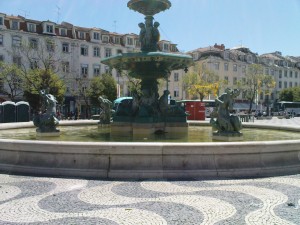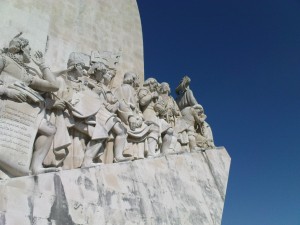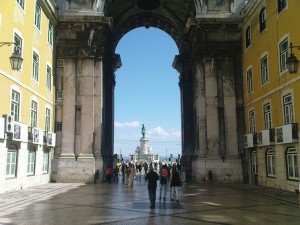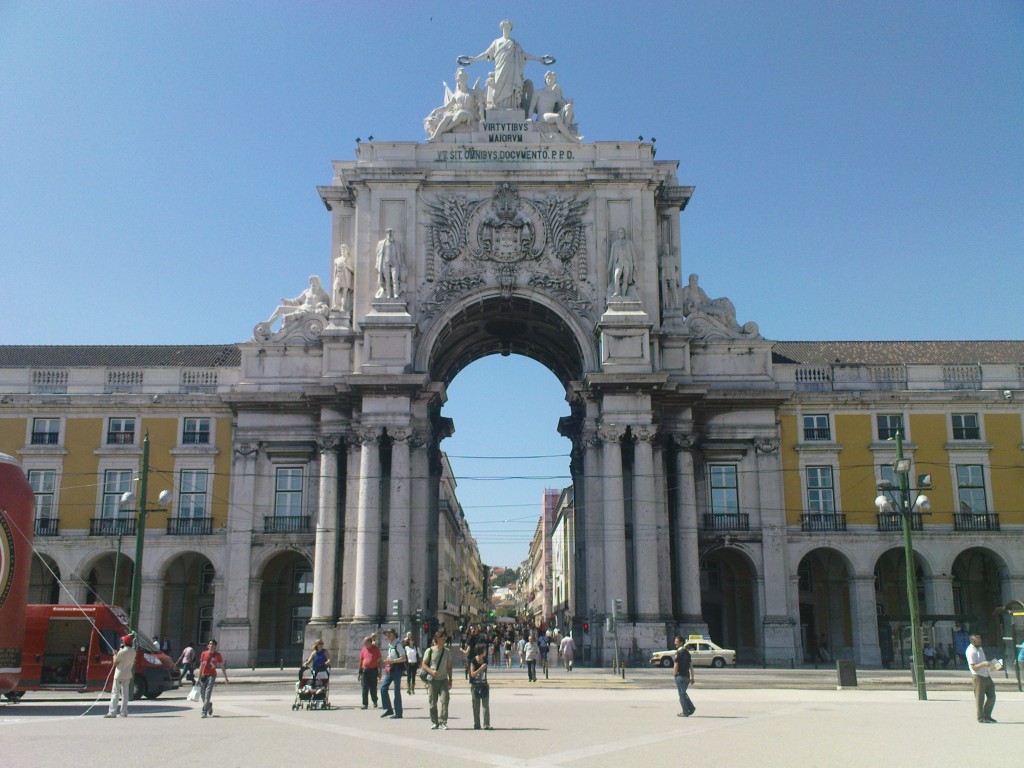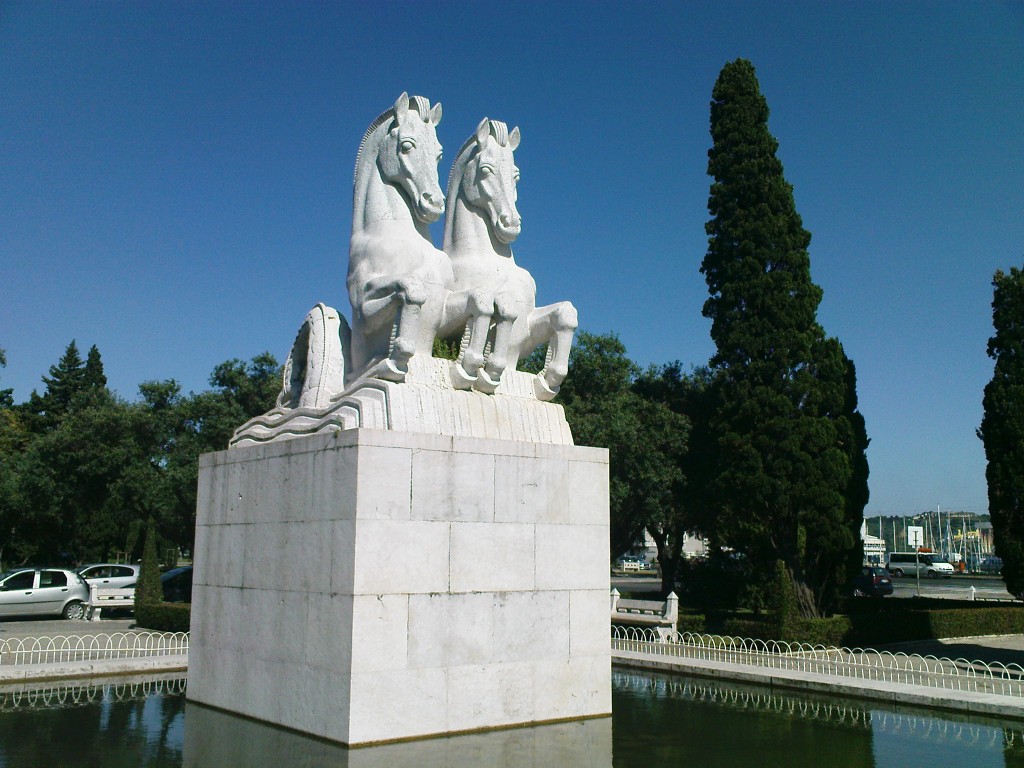Lisbon – Arrival in Portugal
This is the scene that was set for me as I chose at the last minute to lead an escorted tour through Portugal. (Read about why I chose Portugal here).
Lisbon was flattened by an earthquake in 1755, and because of this I was most interested in seeing how the city re-built itself in to the city that it is today. As I flew in over the river I had no idea what to expect.
I drove in from Lisbon airport down wide tree-lined boulevards, past large communal squares humming with entertainment, past attractive elegant consistently designed buildings on the way to my super elegant hotel only steps from the centre of town.
I share with you my Top 4 observations on Lisbon.
1. Lisbon – Post-Earthquake
The first thing that impressed me was the post-earthquake rebuild. The prime-minister of the time, Marquês de Pombal had insisted on wide boulevards and open spaces – locals at the time thought that he had lost his head insisting on such large roadways, when the form of transport at the time was on horseback. Of course now nearly 250 years later he is looked on as being a visionary.
2. Portugal – The Grand Superpower
In the 15th century the Portugese were the undisputed world superpower. People such as Vasco da Gama and Fredinand Magellan ventured out and helped create an empire which spread from South America through Asia including China and India. This is the city of explorers and to be able to see the richness of their life from this time was a treat. As Portugal progressed from the 15th century and raced towards the 20th century the city still entertained and lived the rich life of world leaders with a vast collection of embassies and palaces
in the hills beyond Lisbon city. Back 5 centuries ago the King of Portugal was known to travel to visit the Pope making his impressive entrance to Rome on a fleet of golden carriages with horses hooved in solid gold! Such a back drop is interesting when assessing the financial health of Portugal today.
3. Lisbon – the City and its Culture
To walk down the pedestrian street Rue Augusta from the river-front at Praca do Comercio is a treat! You walk across glorious pavements presented in mosaic tiles creating their own perfect works of art. You pass sensitively designed shop fronts that appear as if they are meant to be there, with no shop front clashing with the next. You slowly make your way up the
narrow streets on any one of the seven hills surrounding the city only to experience a visual triumph of charming narrow streets, breath-taking tiled facades to the building fronts, open-spaced communal squares, with teasing viewpoints out over this city, which is criss-crossed with old colourful electric trams. The colourful bars and restaurants and cafés with their world famous pastry counters are never far away from a flagging tourist!
Fado music and their restaurants would be one of the highlights of Lisbon. Fado music is a soulful folk music which usually consists of a solo singer being accompanied often by two 12 string guitars. The music and songs follows melancholic themes of love. The Maitre d’ of the famous Club de Fado, Miguel Fernandas, mentioned that in these songs the singer sings about the loves in their life, always while referring about their country and their history. An evening of Fado singing will inspire you. Listen to Dulce Pontes – Cancao do Mar
4. The Portugese People
One of the joys of travel is to experience the people of the countries you visit. From the taxi driver, to the staff in the hotel lobby, to the servers in the cafés, to the local tour guides, I only ever experienced a richness of people that astounded.
Here were a proud people who were the great adventurers of the world, who still had the spirit as if they still were the great discoverers. They carried on their shoulders a richness of spirit, which maybe derives from the rich history that their country played in the globalisation of history. Portugal represents the best we can find in the human spirit. As we read of their country’s financial crisis we must separate this out as being a political quagmire and issue, and that this personal spirit of Portugal will come to the fore in restoring their political pride in the years ahead.
I have recently finished leading a ten day escorted tour through Portugal, starting in Lisbon and ending in Porto. Over the next weeks I will share with you my experiences of this wonderful journey. You may want to keep an eye on www.france.co.nz for information on future tours of Portugal.
For my stay in Lisbon I especially would like to thank:
Alberto Rouiller from www.BestinPortugal.com
Miguel Carvalho – Portugese National Tourist Office in New York
Obrigado!


